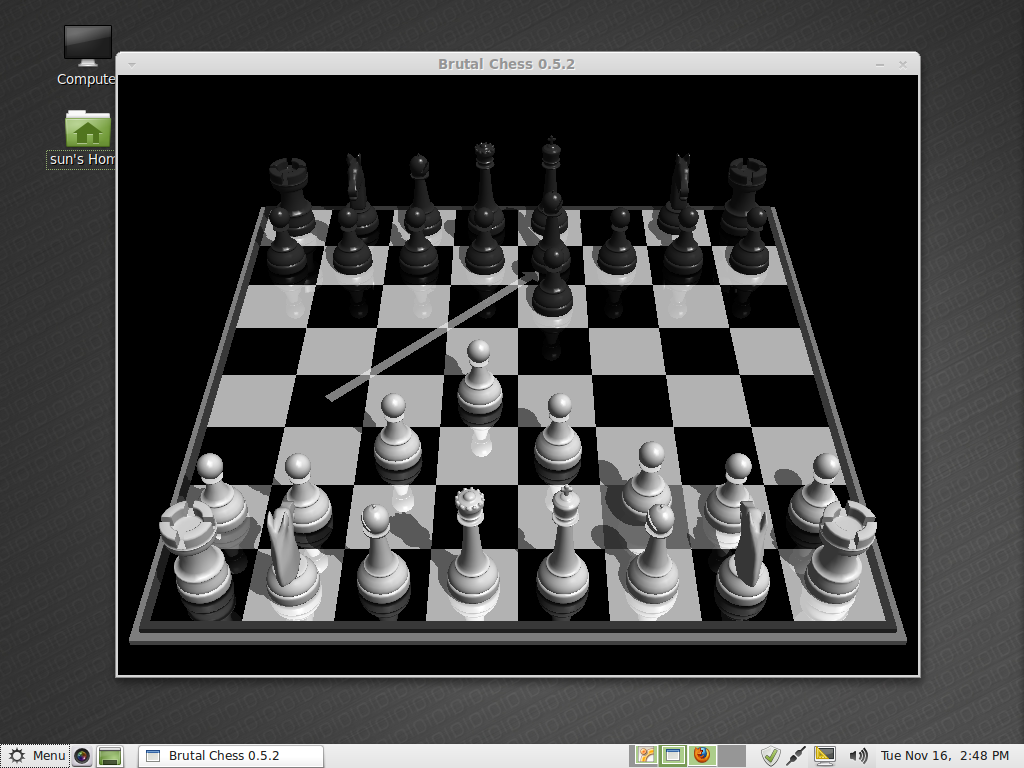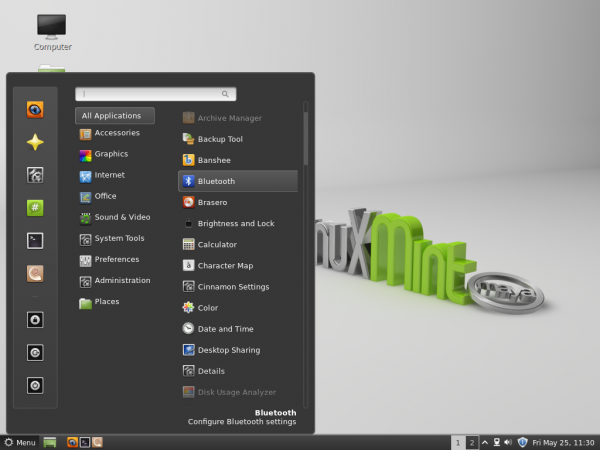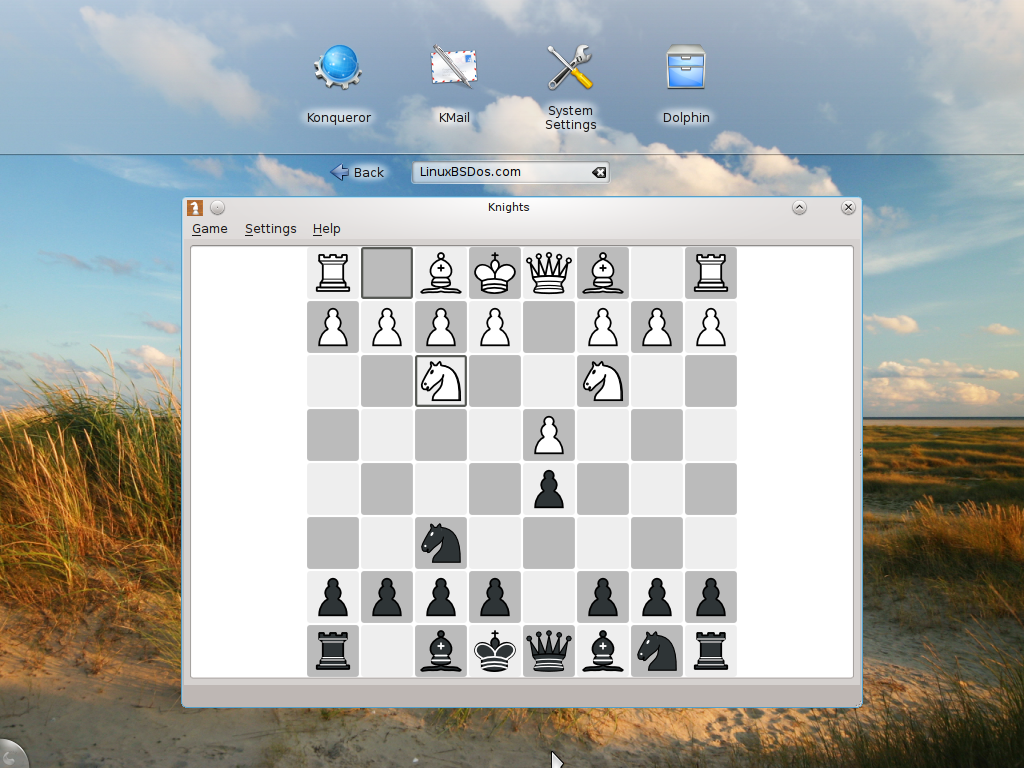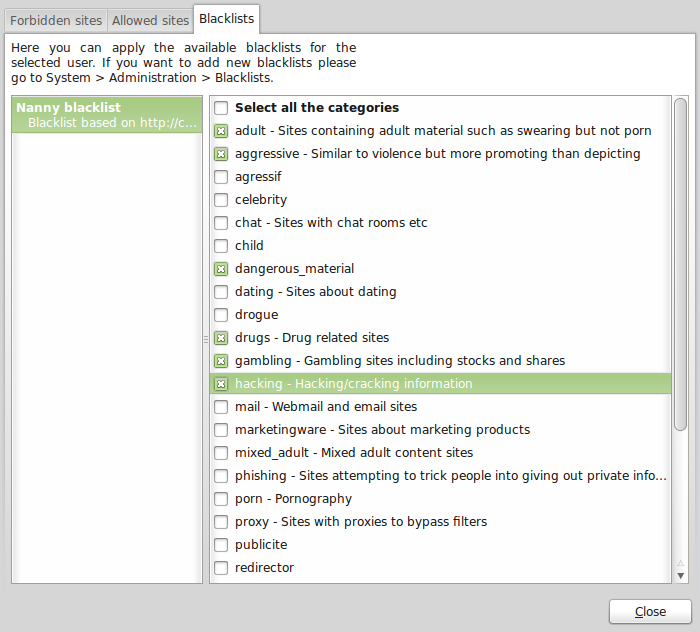Another (graphical) administrative tool that I would like mention, not because it is really useful, but just to point that there is a better alternative, is mintNanny. As a domain blocker, mintNanny provides the most basic parental control function.

mintNanny
A better and feature-rich alternative is Nanny. It has features that make it look like a graphical interface to xinetd. Though it is not installed by default, it is available in the repository, and you can install it from the Software Manager (search for nanny), or by running sudo apt-get install nanny from a shell terminal. A few more screenshots of Nanny and setup instructions are available here.

Access control for use of the PC may be specified for a range of days and time
Security: A new installation of Linux Mint 10 has three open ports – 139 (netbios-ssn), 445 (microsoft-ds), and 631 (ipp). As on Ubuntu, ufw, the user-friendly firewall script, is inactive. However, unlike Ubuntu, Mint 10 comes with Gufw, the graphical interface to ufw, installed.
The userland utilities required to control and manage AppArmor profiles and AppArmor execution mode, are not installed by default. AppArmor is a mandatory access control program, similar in functionality to SELinux, which is the access control program on Fedora and its derivatives.
Final Thoughts and Suggestions: Linux Mint has always been a good desktop distribution. It is especially well suited for those new to Linux, and those not needing some of the features that Fedora, Mandriva, and Debian offers. I think more users will be attracted to it if features, like LVM and full disk encryption, are supported by the installer. There is a small, but significant group of users who will not use a distribution if they are unable to encrypt the whole system, and I think more users will choose to encrypt if they know what it is and understand the benefits.
Since it is doubtful that those features will find their way into Ubiquity any time soon, Clement Lefebvre and his team could just adopt another, better installation program. Fedora Project’s Anaconda, and YALI, the installation program on Pardus, are two good candidates.
Here are a few more suggestions:
- I wrote earlier that most of the user-submitted reviews in the Software Manager are meaningless one-liners. The image below shows one that is not. It is an example of the type of review that will be most useful to other readers. If you have ever submitted a review, please let this example serve as a guide as to the type of review the community will appreciate.

Useful review
- After an application is installed from the Software Center, I think it will be better to present a message of the sort shown in the image below to the user. This is better, I think, than going to hunt down the newly installed application in the menu. The image, by the way, is from an installation of Fedora 14.

- I used a DVD image to install my test systems, and I think there is ample room in there for a few games. I can understand the not-enough-space-on-the-CD image, but not for the DVD image.
- One of the best features of Mandriva is the MCC, the Mandriva Control Center. And that is not just because the administrative tools are feature-rich, but because it makes it possible to have access to all root-level administrative tools with one authentication. I think Linux Mint is ready for such a feature. It already has a control center. All that remains is to separate those needing root-privileges from common desktop customization tools, then password-protect the Control Center. Being forced to authenticate at every turn on a system that you are already logged into does very little to improve the security of the system. It just makes it a little bit more inconvenient to administrate the machine.
Resources: Read the latest tutorials on Linux Mint here and download an installation image here. My recommendation is to install from the DVD image.








thank you i love that os its very good on it now lol tried ubuntu n mint i like Pinguy best but i am thinking of getting a Macbook Pro so i know all hardware works out of the box and virtual box linux
What security features do Linux Mint 10 provide for the user?
Hi, I’m a new user to Linux… I have downloaded Linux mint 10 from the Linux website but, when i tried to install it on my Desktop, i’m unable to complete the installation because when it comes to the window “”who are you?”” My forward button shows as Unavailable… I have filled all the fields correctly but still no result…. Please Help….
That could only happen if you neglected to fill a required field. If you can, grab a screenshot of the step you are having issues with and post at the forum.
That review is really impressive. A friend of mine also did a review of Linux Mint 10 on my blog and I need to get it but I am a big fan of Mac computers.
Mint is just another respin of Ubuntu that uses the Ubuntu installer, the Ubuntu package management system, and the ubuntu security updates. There is a Mint version using pure debian, but it is very unstable and has a security hole in it.
Is it the “Ubuntu package management system?” Or the Advanced Packaging Tool, which is the Debian package management system.
I’ll be giving this a try tonight as a development environment via virtualbox.
In this reviews first sentence you claim that Mint 10 is based on Ubuntu, but as I recall this version of mint is based on Debian rather than Ubuntu and that mint is trying to distance itself from Ubuntu. Is this incorrect?
never mind, after a little research I’ve found the Debian version just to be a separate distro LMDE. My bad
Impressive menu thingy. I can see the kde people wanting to nick it. And why shouldn’t they? Open source is like that.
Can you please review Pinguy OS 10.10?